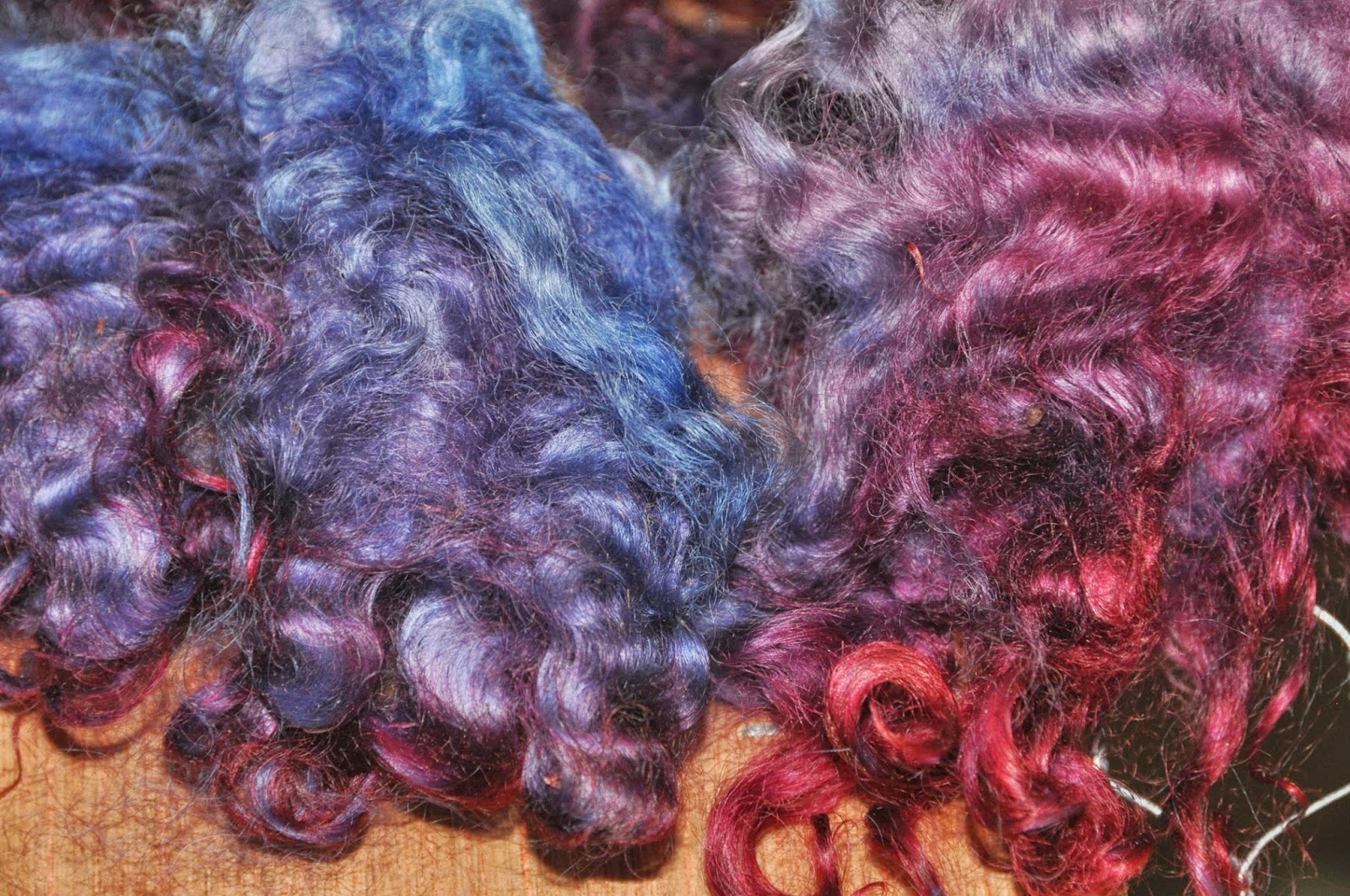Step 1. Skirt enough raw fleece to make a worthwhile load. In this case I collected about five pounds of Cotswold that isn't going into the batch of yarn I'm having spun because the tips were a little yellow and it would give the yarn more of a butter color than I want. I have a washing machine in the wool shop which is dedicated just for washing fiber. Five pounds fits comfortably in the drum without packing it in too tightly when filled with water to the "Extra Large" load setting.
Step 2. Fill the washer with the hottest water possible and give the wool a 20 minute soak in just clear water. (Soak only - never agitate!) I don't use soap for the first soak because the water alone will lift out a lot of lanolin and water soluble dirt.
This is how much dirt the water alone lifts from the wool.
The wool already shows improvement.
Step 3. Spin the dirty water out. Remove the wool from the washer drum and refill it with fresh hot water. This time I add soap. Everyone has their preferences and there are many brands that do a fine job, both those formulated for washing fleece and also just good old dish and laundry soap. If you are washing and wool is still greasy the problem is probably not the soap, but the water. Getting it hot enough is an issue for many people especially since today's water heaters have safety settings that will never do the job fiber prep requires. If you can't change the settings on your water heater you can literally bring a canner kettle of water to a boil, turn it off, and sink your wool in that.
Step 4. Sink the fleece back into the washer and let it soak in the soap for 20 minutes.
Step 5 and 6 - Remove wool, fill washer with fresh hot water and return the wool to soak 20 minutes. Spin and repeat another clear water soak. Occasionally I'll need to do two soap washes especially if the fleece is from a ram (or I've gotten dumb and tried to wash too much wool at once) but whether one or two soap washes I do give the fleece 2 clear soaking rinses to remove all the soap. Water is almost clear by the end of the second rinse.
And the wool looks a lot more respectable.
From here it goes into the dye pot. I can fit about half the basket into the big stock pot in the sink. I add vinegar as our water is hard and the dye likes a more neutral environment. It's hard to show how dark the dye is but it's a very intense purple mixed from dark blue and dark red.
Once filled, I put the pot in the oven on 200 degrees until the water seems clear (a few hours) then the pot comes out and sits on the floor overnight to cool and finish setting. This is how clear the dye bath exhausts.
No dye is going into the environment :-)
I then give the dyed wool another rinse in the washer with lukewarm water. This removes any vinegar smell from the fiber and also rinses out a bit more dirt from the fleece. I've found it impossible to get rinse water totally clear when washing. There is always some small amount of dust and tiny particles of 'stuff' that hang onto the wool. I can't imagine how much water I'd waste trying to pursue perfectly clear rinse water. But it's OK because the 'stuff' turns to dust when dry and falls out during picking and carding so it comes back as lovely clean roving.
Look at this - the dye broke! Even though the powders were totally dissolved in the water, the blue jumped onto some locks and the butt part of others and the red component went largely to the tips of the locks.
That ought to make some really pretty purple roving when it's carded together!
Holly says:
"I think I've had as much fun out here as I can stand. Can we go to the house?"
Yep, time to let the wool dry and we'll go do something else.

































